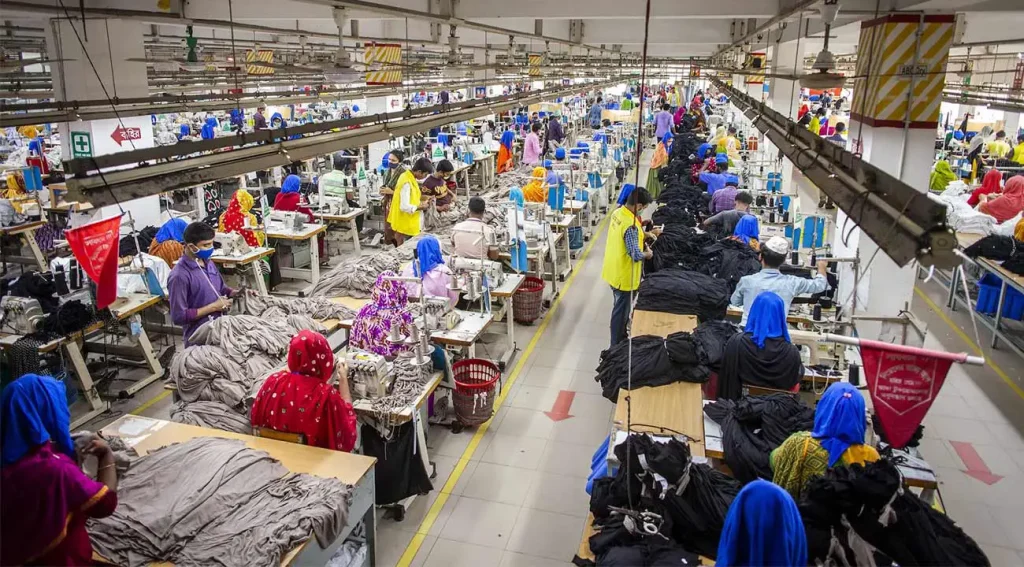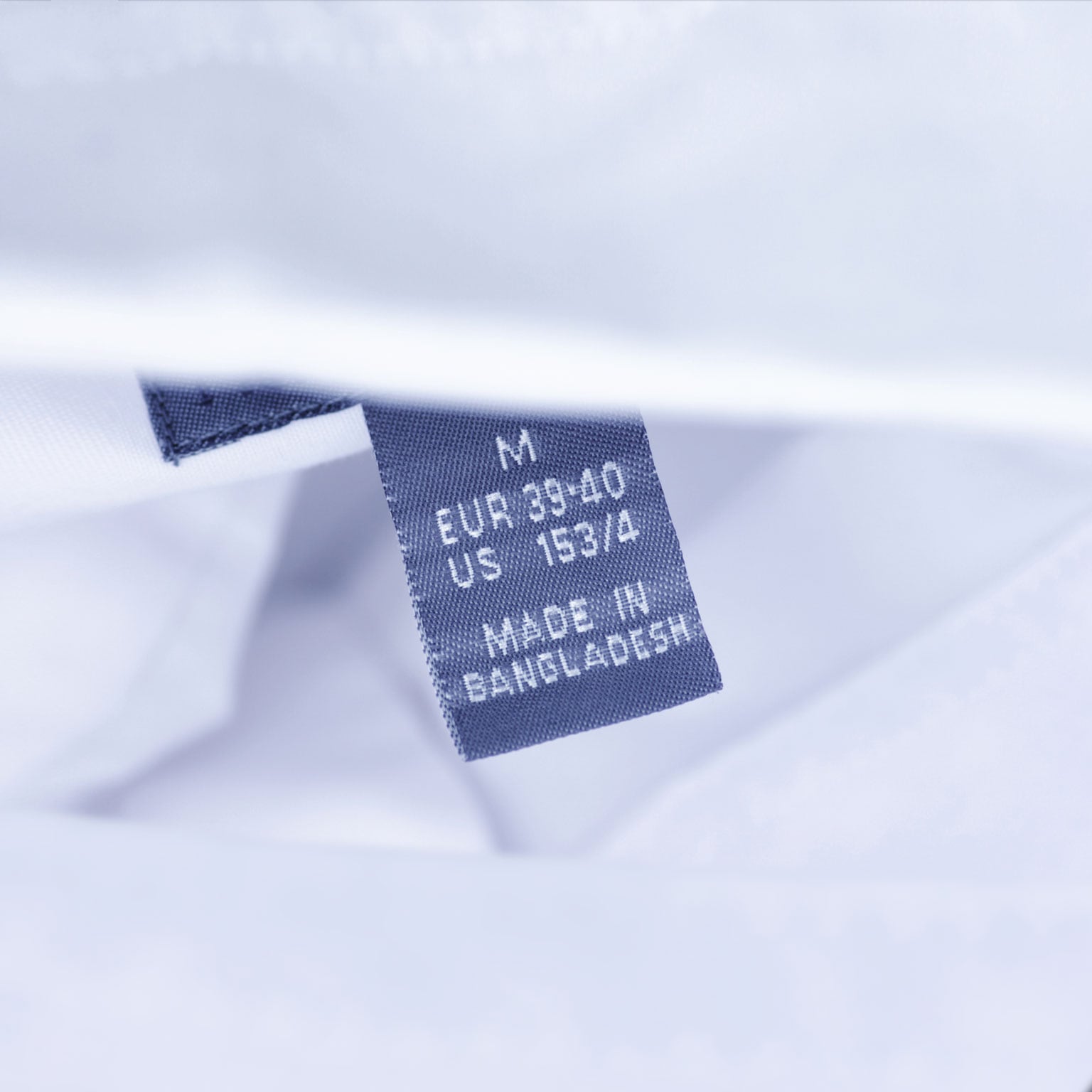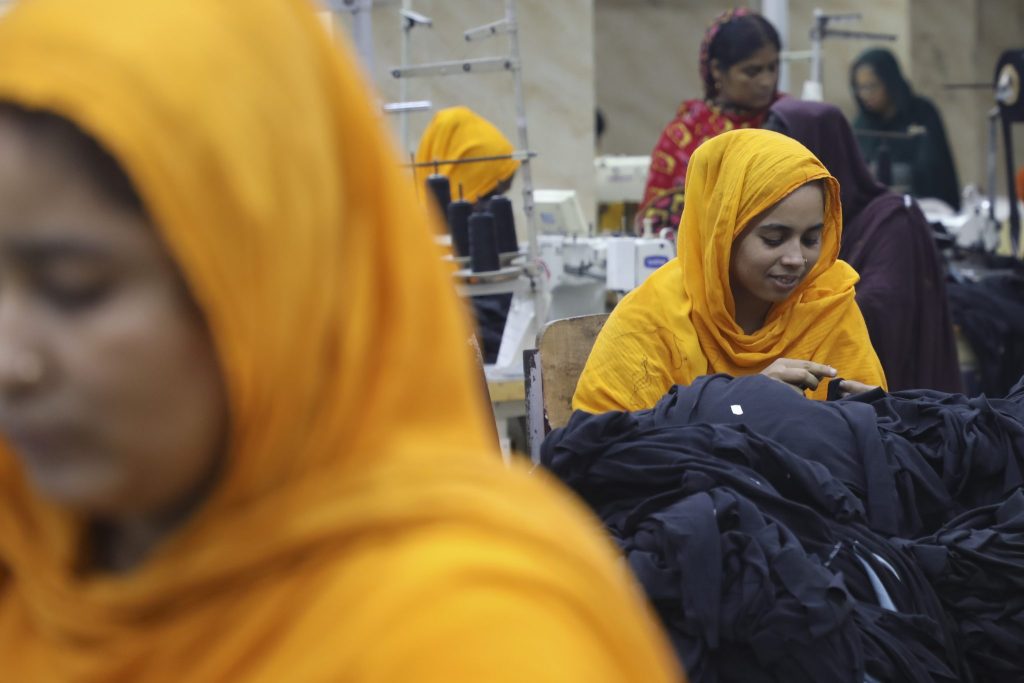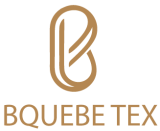Bangladesh’s Ready-Made Garment (RMG) sector faces growth challenges despite its global significance. Maintaining momentum and addressing hurdles such as labor rights and environmental concerns are key.
Bangladesh’s rise as a global textile powerhouse represents a remarkable chapter in economic development. The Ready-Made Garments industry forms the backbone of this success, contributing significantly to the nation’s GDP and employment. Yet, as the sector navigates a path of expansion, it confronts substantial obstacles that threaten to stall progress.
Ensuring sustainable growth necessitates strategic responses to issues like workplace safety, fair wages, and the rising demand for eco-friendly production practices. Adapting to the swiftly changing global market, which increasingly prioritizes transparency and ethical sourcing, remains a critical test for Bangladeshi manufacturers. Stakeholders must collaborate to reinforce the industry’s competitive advantage while championing the socio-economic welfare of its vast workforce.

The Fabric Of Bangladesh’s Economy
Pillars Of The Ready-made Garments Industry
The RMG industry rests on four sturdy pillars:
- Labor force: A vast pool of skilled and trainable workers.
- Entrepreneurship: Dynamic leadership driving innovation and growth.
- Global partnerships: Strong ties with international fashion brands.
- Government support: Policies favoring trade, investment, and infrastructure development.
Economic Impact And Growth
Bangladesh’s RMG sector paints a picture of unabated progress:
| Year | Export Earnings (USD) | Percentage of GDP |
|---|---|---|
| 2018 | 30.61 Billion | 11.17% |
| 2019 | 34.13 Billion | 11.49% |
| 2020 | 27.95 Billion | 10.54% |
| 2021 | 31.45 Billion | 11.25% |
Chronicles Of Ready-made Garments
Evolution Of The Rmg Sector
Bangladesh’s RMG sector began in the late 1970s. It rose from simple roots to become an economic giant. Each thread woven into the fabrics tells a story of determination and progress.
- Early foundations fostered local entrepreneurs.
- Foreign investments kickstarted the 1980s growth.
- Technological advancements brought in innovation.
- Policy reforms empowered expansion and sustainability.
Timeline Of Development
The saga of Bangladesh’s RMG sector carves timelines showcasing triumphs and challenges. Here’s a look at the sector’s remarkable journey.
| Year | Milestone |
|---|---|
| 1971-1980 | Inception and early growth |
| 1980s | Entrance of foreign investments and joint ventures |
| 1990s | Expansion and export diversification |
| 2000s | Compliance era and move towards sustainability |
| 2010s-present | Consolidation, technological advancements, and market dominance |
Global Threads In Local Weaves
International Trade Relations
Bangladesh’s RMG sector flourishes on robust trade relations. The country has forged partnerships that open doors to new markets. Bilateral agreements and trade concessions underpin this expansion. These pacts boost exports and reinforce economic ties.
- European Union (EU): Zero-tariff access through Everything But Arms (EBA) initiative
- United States: Generalized System of Preferences (GSP) benefitting select products
- Emerging Markets: Increasing penetration in Asia and Latin America
Export Dynamics And World Market
RMG exports from Bangladesh demonstrate dynamism. They reflect the country’s ability to cater to diverse global trends. With a keen focus on quality and competitive pricing, Bangladesh stands tall in the world market.
| Market | Share (%) | Yearly Growth |
|---|---|---|
| EU | 60 | Stable increase |
| USA | 20 | Moderate rise |
| Asia | 15 | Rapid growth |
| Others | 5 | Slow but steady |

Credit: www.mckinsey.com
Mapping The Competitive Terrain
Regional Competitors
The RMG sector in South Asia is intense with rivals. Countries like India, Vietnam, and Sri Lanka are key players. They share close proximity and similar market dynamics.
- India boasts a large cotton supply.
- Vietnam has robust trade agreements.
- Sri Lanka offers strong ethical branding.
| Country | Advantages |
|---|---|
| India | Large cotton production, diverse textiles |
| Vietnam | Trade agreements, strategic location |
| Sri Lanka | Ethical manufacturing, quality focus |
Global Rivals
Beyond Asia, Bangladesh competes globally. China remains the top global manufacturer; Turkey plays a key role with its high-quality textiles.
- China’s scale gives it a cost edge.
- Turkey excels in fashion-forward designs.
Maintaining Competitive Edge
Maintaining a competitive edge is crucial in a crowded market. Bangladesh focuses on cost-effective production and rapid turnaround times. The nation invests in improving labor conditions and sustainability practices. Advancing technology is also key. Innovative practices and market diversification can drive growth. Ensuring compliance standards are met is imperative for market retention and expansion.
Growth Challenges Unraveled
Internal And External Hurdles
The local landscape is riddled with complexities. From infrastructure deficits to skill shortages, Bangladesh’s RMG sector struggles to maintain its global position. Political instability and economic policies also weave into this intricate tapestry. On the global stage, competition escalates. Shifting trade agreements and buyer demands put the industry under pressure. The need for agile adaptation is more potent than ever.
- Infrastructure needs: Ranging from energy supply to roads.
- Labor skill gaps: Upgrading worker’s skills is vital.
- Political and Economic Changes: Influences from local to global levels.
Sustainable Development Concerns
Sustainability is a global megatrend. The RMG sector in Bangladesh must embrace this trend to ensure long-term viability. Rapid industrial growth often comes at the expense of the environment. Eco-friendly practices are not just ethical — they are becoming mandatory.
| Area of Focus | Challenges |
|---|---|
| Environmental Impact | Reducing carbon footprint and managing waste |
| Worker Welfare | Ensuring fair labor conditions and safety |
| Resource Management | Efficient use of water and raw materials |

Credit: eastasiaforum.org
Labor In The Loom Of Growth
Worker Rights And Welfare
The rights and wellbeing of workers remain a topic of utmost importance within the garment industry. Factories buzz with the energy of laborers who drive the wheels of innovation and efficiency. However, the quest for humane working conditions and safety has been a patchwork effort of improvements and setbacks. Organizations both local and international continue to advocate for:
- Safe working environments
- Respect for labor laws
- Adequate health facilities
The Struggle For Fair Wages
In the quest for economic development, fair wages serve as a central thread. The labor force, skilled in the art of garment-making, seeks compensation that dignifies their craft and effort. Discussions radiate through the layers of management and regulation, as wage boards and workers’ groups negotiate the numbers:
| Year | Minimum Wage (BDT) | Percentage Increase |
|---|---|---|
| 2018 | 8,000 | 51% |
| 2021 | Estimated 5% annual increment | – |
Technological Threadwork
Innovation And Automation
As global retail shifts gears, Bangladesh’s RMG sector is not merely keeping pace: it’s redefining its own machinery. Innovation has become the needle threading through every aspect of garment production.
- Smart Machines: From computerized sewing machines to automated cutters, the factory floors are buzzing with new tech.
- Robotics: Robots now assist in packing and material handling, increasing efficiency.
- AI-Driven Design: Artificial Intelligence supports fashion design, predicting trends, and consumer behaviors.
Adapting To Industry 4.0
The fourth industrial revolution, or Industry 4.0, is knocking on factory doors. Bangladesh’s RMG sector must open wide to remain a contender on the world stage. Integration is key. Manufacturers are sewing together the Internet of Things (IoT), big data, and analytics for a snug fit.
| Technology | Impact |
|---|---|
| IoT | Enables real-time tracking of inventory and machinery health. |
| Big Data | Fosters informed decision-making, fueling growth and productivity. |
| Cloud Computing | Empowers remote design collaborations and data storage solutions. |

Credit: mercantopia.wordpress.com
Environmental Colors And Concerns
Eco-friendly Practices
The call for greener manufacturing methods is growing louder. Factories are now exploring ways to lessen their environmental impact. Initiatives include:
- Water recycling to reduce wastage
- Energy-efficient machinery that cuts down power use
- Organic materials usage to minimize chemical inputs
Industry’s Carbon Footprint
A significant area of concern is the carbon footprint of the garment sector. This industry is energy-intensive, often relying on coal-powered energy that emits large amounts of CO2. Recent data highlights a pressing need for change:
| Year | CO2 Emissions (in million tonnes) |
|---|---|
| 2018 | 1.23 |
| 2019 | 1.35 |
Policy Patterns
Government Initiatives And Support
In a move to bolster the RMG sector, the government of Bangladesh has rolled out a series of supportive initiatives. Enterprise growth and sustainability sit at the heart of these policies. Let’s explore key government-led supports strengthening this industry:
- Incentive packages to promote exports.
- Financial subsidies curtail production costs.
- Training programs to elevate worker skills.
- Infrastructure developments, ensuring smoother operations.
Regulatory Landscape
With robust economic contribution comes stringent regulation. The regulatory landscape is designed to navigate the RMG sector’s bustling activity with precision. Below, we outline critical elements governing the industry:
| Aspect | Regulatory Highlights |
|---|---|
| Labor Laws | Mandate fair wages, working hours, and safety protocols. |
| Environmental Codes | Enforce sustainable production standards. |
| Export Procedures | Streamline customs for efficient international trade. |
| Quality Assurance | Implement rigorous quality control measures. |
Building A Resilient Fabric
Disaster Preparedness In Rmg
Thoughtful planning can shield the RMG sector from crippling effects of disasters. Key elements include:
- Evaluation of Risks: Assessing factory structures for vulnerabilities.
- Training: Conducting regular safety drills for the workforce.
- Compliance: Adhering to global safety standards.
| Year | Initiatives |
|---|---|
| 2013 | Introduction of the Bangladesh Accord on Fire and Building Safety. |
| 2014 | Establishment of the Alliance for Bangladesh Worker Safety. |
Crisis Management Strategies
Effective crisis management ensures business continuity and protects lives. Strategies include:
- Contingency Plans: Outlining actions for different crisis scenarios.
- Communication Channels: Maintaining transparent communication during crises.
- Recovery Roadmaps: Planning for quick recovery and support to affected parties.
Trends Tailored For The Future
Emerging Market Trends
Understanding current trends is vital for the RMG sector to thrive. Here are some key ones:
- Eco-friendly practices are gaining momentum.
- Digitalization is optimizing supply chain efficiency.
- Automated production technologies are becoming essential.
- There is a shift towards fast fashion to meet consumer demand.
- Diversification in products is attracting new markets.
Predictions For The Rmg Sector
The outlook for Bangladesh’s RMG sector includes several predictions:
| Year | Prediction |
|---|---|
| 2023-2025 | Greater consolidation among small and large players. |
| 2025-2030 | Strong push towards full automation in production. |
| 2030 and beyond | Sustainable materials to become industry standard. |
The Weave Of Women’s Work
Female Workforce Dominance
Women form the backbone of the garment sector in Bangladesh. A staggering 80% of the workforce is female. They stitch, operate machines, and manage production lines with unmatched skill. These women are not just laborers; they are the pulsing heart of Bangladesh’s growth in the global fashion industry. Their hands ensure that the country remains one of the top apparel exporters in the world.
Empowerment And Challenges
Empowerment through employment in the garment industry is a game-changer for many women. Earning their own income gives them more say at home and in society. Yet, challenges darken this bright picture. Long hours, safety issues, and inadequate wages are daily hurdles. Empowerment is within reach but only if these barriers are overcome.
- Improving Working Conditions: Companies are focusing on safer factories and fairer treatment.
- Education Programs: Initiatives aim to teach skills beyond the factory floor.
- Health Awareness: Access to healthcare is becoming a priority for female workers.
Stitching Together A Skilled Workforce
In Bangladesh’s ready-made garments landscape, crafting a skilled workforce is crucial for growth. Focused investment in education and skill development primes a workforce ready to meet the evolving demands of the global market. Marrying those newly developed skills with attractive opportunities ensures that the industry doesn’t just grow, but thrives. Let’s dive into how Bangladesh can stitch together this skilled workforce.
Education And Skill Development
- Upgraded training facilities.
- Curriculums aligned with international standards.
- Incentives for continuous learning.
Quality education is the framework for a proficient workforce. Bangladesh must upgrade its training facilities to include the latest machinery and techniques. Curriculums need to align with international standards, and incentives for continuous learning should be offered to encourage ongoing professional development. Partnerships with global fashion institutes can foster a forward-thinking mindset.
Attracting Skilled Labor
| Strategy | Action |
|---|---|
| Competitive Wages | Match or exceed regional standards |
| Improved Living Conditions | Provide safe, affordable housing |
| Clear Career Pathways | Define advancement opportunities |
Attracting skilled labor is a multifaceted approach, reliant on offering competitive wages and improved living conditions. To retain talent, it’s essential to provide safe and affordable housing options close to workspaces. Clear career pathways will motivate employees to invest their future in Bangladesh’s garments industry, promoting loyalty and reducing turnover.
Social Fabric And Corporate Responsibility
Corporate Social Responsibility
Bangladesh’s ready-made garment sector recognizes corporate social responsibility (CSR) as a key pillar for sustainable growth. Leading companies are implementing CSR strategies to improve workers’ lives.
- Healthcare initiatives for employees
- Education programs for workers’ children
- Safe working conditions ensured by rigorous inspections
Industry’s Social Impact
The garment industry’s growth in Bangladesh has far-reaching effects on the community. The sector contributes significantly to uplifting social and economic standards.
| Impact Area | Details |
|---|---|
| Employment | Employs over 4 million people, with a high percentage of women |
| Economic Empowerment | Increases household incomes, driving up consumption and financial independence. |
| Community Investment | Corporate profits funnel back into local infrastructure and education. |
Navigating Trade Agreements And Tariffs
Fta Benefits And Challenges
Free Trade Agreements (FTAs) are crucial for Bangladesh’s RMG exporters.
- Reduced Tariffs: FTAs typically lower the tariffs on exported goods, making products more competitive in the global market.
- Market Access: They open doors to new markets that were previously hard to penetrate due to strict trade barriers or high import duties.
- Compliance Costs: Abiding by FTA rules can be costly.
- Policy Changes: Shifts in trade policies can alter agreement dynamics, affecting stability.
Customs And Tariff Implications
Tariffs impact costs and prices directly. RMG exporters must understand customs duties in destination countries.
| Country | Tariff Rate |
|---|---|
| USA | 15% |
| EU | 12% |
Supply Chain Complexity
Managing Supply And Demand
Aligning production with market needs is a delicate dance in Bangladesh’s RMG industry. Rapid changes in consumer tastes challenge manufacturers.
- Predictive Analytics: Firms employ data to anticipate demand surges.
- Supplier Relationships: Strong ties with suppliers secure material flow.
- Inventory Control: Smart inventory management prevents overstocking.
Mitigating Risk In Supply Chains
Risk is inherent in the RMG sector’s vast supply network. Yet, businesses can take steps to safeguard against potential pitfalls.
- Diversification: Sourcing from different regions reduces dependency risks.
- Transparency: Clear processes help identify issues early.
- Compliance: Adhering to regulations protects against legal troubles.
Creating Fashion’s Future
Design Innovation
Exploring new styles and enhancing fabric quality keeps Bangladesh ahead. A quest for excellence defines this journey. Cutting-edge technology blends with skilled craftsmanship to create world-class apparel. Design innovation ensures garments made in Bangladesh lead the market trends.
- Smart textiles and eco-friendly materials
- Automated cutting-edge technology
- Breathable fabrics for comfort
The Role Of Local Designers
Local designers are the heartbeat of Bangladesh’s garment landscape. They craft stories through patterns and colors. Their creative minds bring traditional motifs to life in a modern context. Education and exposure propel them to new heights.
| Designer Role | Impact on Fashion |
|---|---|
| Tradition meets trend | Fusion wear popularity |
| Innovative patterns | Global fashion appeal |
| Eco-conscious designs | Demand for sustainable wear |
The Push For Ethical Fashion
Conscious Consumerism
Bold moves in consumer behavior are influencing Bangladesh’s garment sector. Conscious consumerism isn’t a trend, but a growing shift in awareness. Shoppers worldwide are making informed choices, favoring brands that align with their values on human rights and environmental care.
- Consumers prefer purchasing from ethical brands
- Rising demand for transparency in production processes
- Garment labels highlighting sustainable practices gain popularity
Sustainable Brand Initiatives
Brands with operations in Bangladesh are pioneering sustainable brand initiatives. These efforts showcase a commitment to ethical fashion and pave the way for industry-wide change. Brands are now:
- Investing in eco-friendly materials and production
- Implementing stricter labor standards and audits
- Partnering with local stakeholders for community upliftment
Financial Weaving: Investment And Financing
Investment Opportunities
Bangladesh’s RMG sector offers lucrative options for investors keen on contributing to a robust growth story. The country boasts cost-effective labor and expansive production capabilities, enticing international brands. Government incentives further sweeten the deal for potential stakeholders.
- Joint Ventures: A gateway for technology and expertise exchange.
- Infrastructure Development: Crucial for modernizing production facilities.
- Green Manufacturing: Investments in sustainable practices are both ethical and financially rewarding.
Financial Support For Smes
Small and Medium Enterprises (SMEs) form the backbone of the RMG sector. To weave success, they need a tapestry of financial support. Providently, a variety of options are available.
| Type of Support | Description |
|---|---|
| Loans | Low-interest options from banks and microfinance institutions. |
| Grants | Funds that do not require repayment, aimed at specific areas like innovation. |
| Equity Financing | Securing capital in exchange for a share of ownership in the enterprise. |
Spinning Success Stories
Case Studies Of Triumph
Unraveling the fabric of success, one finds that the heart of Bangladesh’s RMG sector beats with inspiring narratives. Brands like Beximco and DBL Group stand tall with stories that weave resilience and innovation into their corporate DNA.
- Beximco: Became the largest exporter of RMG in Bangladesh.
- DBL Group: Invested in eco-friendly technology, boosting its global appeal.
Lessons From Leading Brands
| Brand | Key Lesson |
|---|---|
| Beximco | Investment in diversified products can lead to new markets. |
| DBL Group | Building a sustainable operation is not just good ethics; it’s good business. |
Frequently Asked Questions Of Bangladesh’s Ready-made Garments Landscape: The Challenge Of Growth
What Is Bangladesh’s Rmg Industry?
Bangladesh’s Ready-Made Garments (RMG) industry is a leading sector in the country’s economy, primarily focused on clothing manufacturing and exportation.
How Big Is The Rmg Sector In Bangladesh?
The RMG sector in Bangladesh is immense, contributing significantly to the GDP and providing employment to millions of people across the country.
What Challenges Does Rmg Growth Face?
Challenges include labor rights issues, environmental concerns, global competition, and the need for technological advancements to sustain growth.
Is Bangladesh’s Rmg Eco-friendly?
The industry is making strides towards sustainability, but it still faces challenges in achieving complete eco-friendliness due to various economic and infrastructural constraints.
How Does Rmg Affect Bangladesh’s Economy?
The RMG sector substantially boosts Bangladesh’s economy through extensive export earnings, job creation, and socio-economic development.
What Are Rmg Export Destinations?
Bangladesh’s RMG products are mainly exported to the United States, European Union countries, Canada, and several other regions worldwide.
How Is Rmg Influencing Local Employment?
The RMG industry is a major employment driver in Bangladesh, particularly empowering women by providing numerous job opportunities.
Are Rmg Workers’ Rights Protected?
Workers’ rights protection in the RMG sector is improving but still faces challenges concerning wages, safety, and working conditions.
What Advancements Impact Rmg’s Future?
Technological integration, worker skill development, and improved compliance are key advancements impacting the RMG industry’s future.
Can Rmg Maintain Competitive Pricing?
Maintaining competitive pricing is a challenge for Bangladesh’s RMG industry as it navigates rising production costs and global market pressures.
Conclusion
Navigating the complex landscape of Bangladesh’s ready-made garment industry presents prominent challenges. As global demands evolve, so must the strategies for sustainable growth. The sector’s future hinges on embracing innovation, ethical practices, and proactive global market engagement. The path forward is arduous but holds the promise of remarkable progress and prosperity for Bangladesh.
